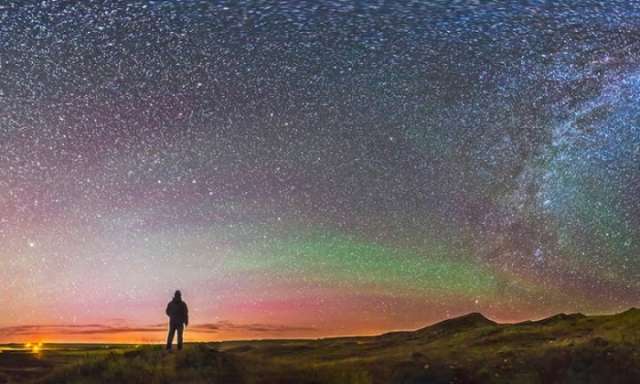Accounts of the phenomenon are sprinkled throughout history. In the first century BC, Pliny the Elder wrote of an event that gives “an appearance of day during the night”. Subsequent accounts were published in 1783 and 1908.
Today, in the age of artificial light, few have experienced the event. “I have never seen one myself,” said Gordon Shepherd, the lead author of the study published this month in the journal Geophysical Research Letters.
In 1991, Shepherd built a satellite instrument capable of measuring airglow, which results when ultraviolet radiation from the sun separates molecular oxygen into individual atoms. The atoms recombine at night, once the sun disappears, releasing energy that emits a green tint.
His latest study came about after researchers noticed that, at times, airglow could be seen by the naked eye. Along with York University’s Young-Min Cho, Shepherd carried out an analysis of two years’ worth of satellite data, finding that wavelengths in the upper atmosphere were at times superimposed over each other, brightening the airglow by as much as tenfold.
Their analysis showed these bright nights occurred 7% of the time and were highly localised, confined to an area about the size of Europe. But outside of remote areas, chances of seeing an event nowadays are slim, due to widespread light pollution.
“If you go back to Roman times, you have a significant population and all of them are looking. They’re all living in an environment with no artificial light,” said Shepherd. “Now almost everybody is living with artificial light.”
The change might explain why accounts of bright nights seem to disappear after the first world war, he said. “They’re something we’ve lost – like we lost species, for example – but we can still see them with our satellites.”
Since the study was published, Shepherd said, he had heard from many whose families had passed down stories about experiencing the bright nights. One shared his grandfather’s story of being chastised as a child after accidentally staying out until midnight playing football, a story Shepherd chalked up to bright nights. “There’s a whole bunch of stories like that,” he added. “Anyone who has seen one is really struck by it.”
More about: #NocturnalSun
















































